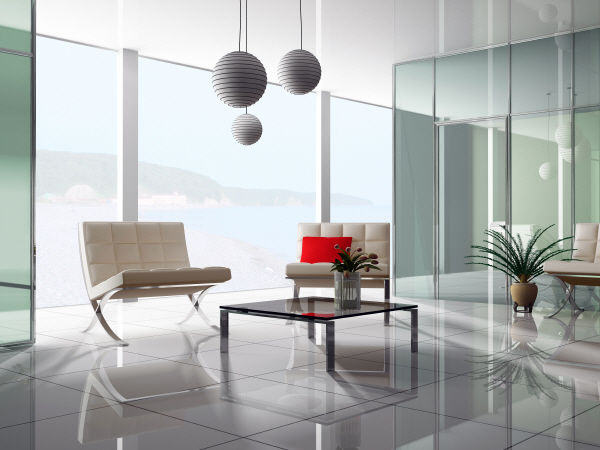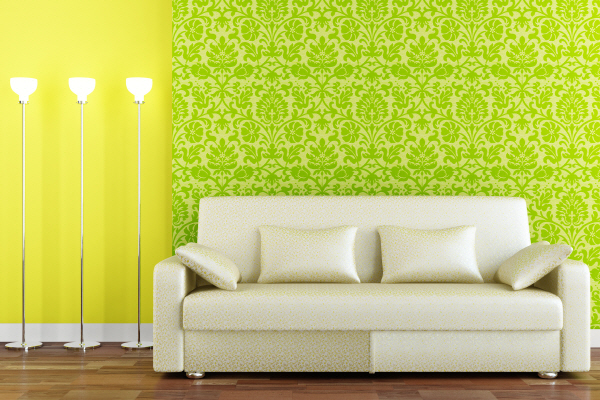Written by Chris Deziel

Hardwood floor maintenance is a snap, and easier than up-keeping carpet. If fact, a minimalist approach is not only easier for you, it’s actually better for the floor.
Whether your floors are real hardwood or laminate, it’s important to keep them free from gritty dirt that can scratch the finish. Beyond that, your floor should need only an occasional wipe down to keep it as shiny as the day you moved in.
Floor maintenance is critical if you expect to get your full security deposit back at the end of your lease. If your floors that have been finished with some type of polyurethane — which is most of them — they do not need waxing.
Here are six ways to protect and maintain hardwood floors.
1. Clean the Finish — Not the Wood
It’s rare to come across floors that have been finished with shellac or alkyd varnish, but if the floor in your rental unit is one of them, get specific cleaning instructions from the landlord when you move in.
In most cases, you’re cleaning polyurethane, an inert layer of durable plastic that’s water- and stain-resistant. Polyurethane, however, is vulnerable to microscopic scratches from dirt ground in by foot traffic.
2. Vacuum Regularly; Mop Occasionally
Even if you observe a shoes-off protocol, it’s a good idea to vacuum at least once a week. Use a soft vacuuming attachment, and leave the beater bar off. (The beater bar, while great for carpets, scratches floor finishes.) Don’t cut corners: lift the floor mats — otherwise knows as gritty dirt magnets — and vacuum underneath them.
Water is a universal solvent that dissolves scuff marks and stains, but it’s an enemy to hardwood floors. If left standing, it can dull the finish and create spots. Even worse, it can seep between the boards and wreak havoc on the wood, causing the boards to warp.
A microfiber string or pad mop with most of the water wrung out is best. Dry the floor with a non-abrasive cloth after mopping.
3. Use a DIY Floor Cleaner
Commercial hardwood floor cleaners are safe and effective, especially if you use one recommended by the manufacturer of your flooring. You probably don’t need one, though, because you can make a pH-neutral cleaner that does the job.
To make floor cleaner, mix the following ingredients in a bucket:
- 2 gallons warm water
- 1 ounce dish detergent
- 1/2 cup vinegar
Vinegar is slightly acidic, which is why it’s a good cleaner. But not every floor manufacturer recommends using it because it could dull the finish. Minimize that from happening by applying the cleaning solution with a damp mop, rinsing with clear water, and drying the floor immediately after mopping.
4. Get Rid of Stains on Hardwood Floors
If you have pets and kids, your floor will likely wind up with super stains, stains so powerful that an all-purpose cleaner can’t even remove them. The trick to handling tough stains is to find a solvent that can dissolve them without damaging the floor finish. Here are three:
- Isopropyl alcohol (rubbing alcohol): removes juice and wine stains. Moisten a rag and dab or rub. Stop immediately if the finish turns soft. That means it’s shellac, and you need those cleaning instructions from your landlord.
- Acetone (or nail polish remover): the go-to solvent for paint and lacquer stains. It will also handle some juice stains. Pour it on a rag — never directly on the floor — and dab.
- Hydrogen peroxide: rids your floor of some pet urine stains and the resulting blackening of the wood (as long as the spots are fairly small). Moisten a rag and leave it on the stain for a couple of hours.
Water Stains
Got white spots caused by standing water? Cover them with petroleum jelly, olive oil or mayonnaise. Then put a paper towel over the stain and wait overnight. The oils will seep into the finish and replace the water. In the morning, the white discoloration should be gone.
5. Avoid Sun Damage
Direct sunlight fades floor finishes and darkens the wood. If you get lots of sunlight through the windows, change the positions of your rugs and the furniture periodically to avoid transition lines caused by sun exposure. If the sun shines on a particular area of the floor every day, use curtains or shades to block it.
6. Try DIY Restoration
Refinishing the floor or restoring the finish is usually a job for the landlord. If your floors need this treatment when you move out, you could lose your security deposit if you damaged the floors more than simple wear and tear.
It’s possible to do a quick restore yourself using a floor restoration product. The procedure is simple: clean the floor and spread the product according to the directions.
But if that doesn’t work, and you damaged the floor, the money to fix it will probably come from your security deposit.
Credit to Chris Deziel
Chris has owned and managed 4 rental properties in Santa Cruz, CA, and Salida, CO and is a DIY handyman expert for popular sites like RedBeacon.




